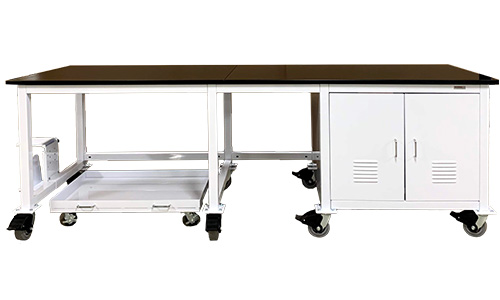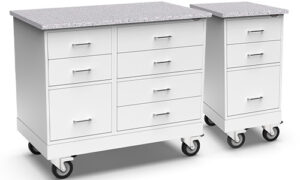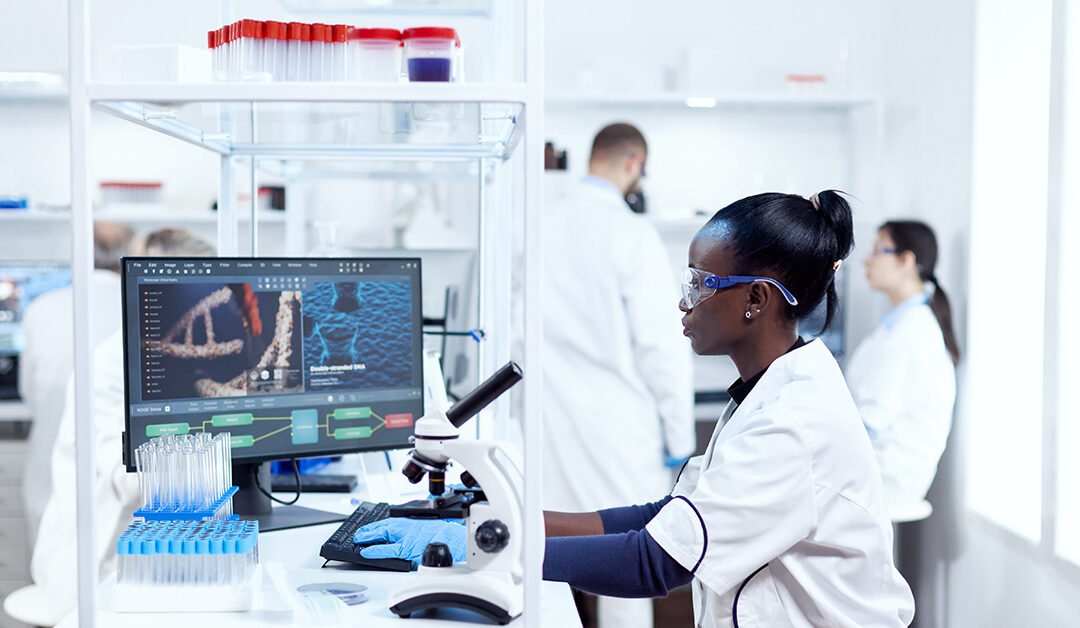In today’s fast-paced work environments, adaptability is essential for success. This holds true not only in traditional work settings but also in specialized environments like laboratories. Recently, there’s been insightful discussion on the importance of flexibility in laboratory design, as highlighted in an article titled “Considerations for Laboratories of the Future: Why Flexibility (Still) Matters” by Scott Kreitlein, Discovery & Science Design Leader at BHDP Architecture, published in Lab Design News.
Flexible Workstations For Your Workspace
While the need for flexible workspaces is well-recognized, these recent developments shed light on the continued importance of flexibility in creating productive and sustainable research environments. In this blog, we’ll explore how flexible workstation designs can transform laboratories, drawing insights from the evolving nature of laboratory design and functionality discussed in Kreitlein’s article.
Key Considerations for Flexible Workstation Design
- Prioritize Cross-Compatibility
Just as in traditional workspaces, cross-compatibility is key in laboratory environments. The ability to adapt and repurpose equipment and furniture is key, especially considering the rapid advancements in scientific technology. Using bench components that seamlessly integrate across various laboratory functions promotes versatility, enabling researchers to quickly reconfigure their workstations to meet evolving needs without significant investment.

A vacuum pump enclosure from our Mass Spectrometer product line was integrated into a mobile Standard Workstation for a labs instrument requirement—a free-standing mobile tray allowed more flexibility for this workspace.
- Embrace Mobility
Mobility is increasingly crucial in modern laboratories, echoing the trend towards flexibility in workplace design. Mobile workstations offer invaluable flexibility by enabling easy relocation and adaptability to different research tasks. Whether it’s accommodating new equipment or facilitating collaborative projects, mobile units enhance efficiency and foster innovation within laboratory settings.
- Invest in Scalability
The need for scalability in laboratory design has become more pronounced in recent years, mirroring the emphasis on future-proofing workspaces. Investing in modular bench systems that can grow with the organization allows laboratories to adapt to changing research priorities and technological advancements seamlessly. By prioritizing scalability, laboratories ensure that their infrastructure remains agile and responsive to evolving demands.

Flexible mobile storage gives users in the lab the ability to add or remove storage as needed as well as easily and securely transport instruments and equipment.
- Assess Long-Term Value
While budget considerations are always top of mind, assessing the long-term value of workstation solutions is critical in laboratory design. The high cost and complexity of planning, constructing, and operating advanced laboratory environments necessitate a focus on longevity and return on investment. By evaluating the total system costs and considering factors such as equipment lifespan and adaptability, laboratories can make informed decisions that maximize value over time.
- Ensure Future Compatibility
In an era of rapid technological advancements, future-proofing laboratory investments is imperative. This aligns closely with the concept of flexibility discussed in the linked article on laboratory design considerations. By prioritizing backward compatibility and designing workstations with future technologies in mind, laboratories can ensure seamless integration and sustained productivity in the face of evolving research needs.
Incorporating flexible workstation designs into laboratory environments is not just a matter of convenience—it’s imperative. As highlighted in recent discussions on laboratory design trends, the need for flexibility and adaptability in research spaces has never been more apparent. By embracing cross-compatibility, mobility, scalability, long-term value assessments, and future compatibility, laboratories can create workspaces that foster innovation, collaboration, and long-term success.

